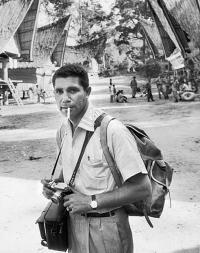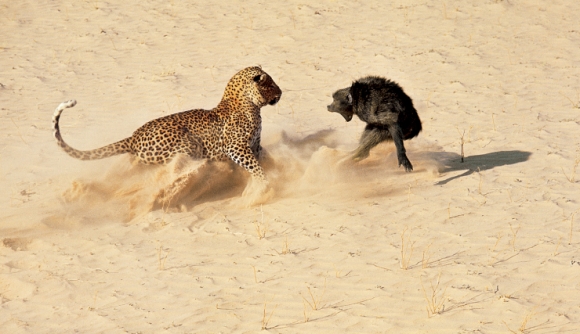The End of a Charmed Life: LIFE Magazine photographer John Dominis dies at age 92
posted Tuesday, January 7, 2014 at 9:32 AM EST

John Dominis, a star among the stars of LIFE Magazine’s stable of photographers, died Monday, December 30, 2013 at the age of 92. In the course of his career at LIFE magazine he chronicled almost every major event of the second half of the 20th century, including photos of the rich and famous and one picture that became emblematic of the American Civil Rights movement.
In his obituaries, Dominis is described as “ingratiating, self-effacing and ruggedly handsome” and remarkably at ease and charming. While these characteristics helped him win assignments to photograph the reclusive Sinatra and the angry McQueen, it was his talent that got the pictures. Beyond his photographic talents though, it was his early use of color film that set him apart from other photojournalists. LIFE magazine wanted to present the world in color and Dominis gave it to them. He was a jack of all photographic trades, equally at home shooting sports, wildlife or food with a great eye for composition and color.

Looking back at his career, it is easy to see photojournalism's radical changes, in ways more fundamental than the introduction of color film. In 2007 he wrote of working for LIFE:
“I received all the support and money and time, whatever was required, to do almost any kind of work I wanted to do, anywhere in the world. It was like having a grant, a Guggenheim grant, but permanently.”
Few photographers get that kind of financial support today. Today, in the world of instantaneous communication, the luxury of extended asignments -- Dominis hung out with Steve McQueen for a month and photographed Frank Sinatra and his cohorts for three months -- is unimaginable.


Born in 1921, John Dominis grew up in Los Angeles and studied cinematography at the University of Southern California. He enlisted in the Air Force in 1943 and after the war became a freelance photographer. He shot for many publications and ultimately established a relationship with LIFE magazine. In 1950, he was a combat photographer for LIFE during the Korean “police action” and later photographed the war in Vietnam. He traveled the world throughout the 1960s on assignments, covering everything from John F. Kennedy's famous “Ich Bin Eine Berliner” speech in 1963 to the music and the mud at the Woodstock festival in '69.

He took his most famous photograph in 1968 at the Summer Olympics in Mexico City. It documents the moment when African American track and field stars Tommie Smith and John Carlos -- while on the awards platform adorned with their new Olympic medals -- bowed their heads and raised their black-gloved fists in a black power salute, keeping them raised throughout The Star-Spangled Banner. It was both a powerful and strange moment, for as the New York Times reported, the event “actually passed without much general notice in the packed Olympic Stadium.”
Dominis agreed forty years later in an interview with Smithsonian magazine, “I didn’t think it was a big news event, I hardly noticed what was happening when I was shooting.”
Despite this, the image quickly spread around the world and became an iconic symbol of the turbulent struggle for Civil Rights in America.

Dominis’s life wasn’t always charmed. In John Loengard's 1998 book LIFE Photographers: What They Saw, Dominis talked about staging his photograph A leopard about to kill a baboon. Dominis took the photo in 1966 in Botswana, when a local hunter captured a leopard and brought it to Dominis’ camp. There they set it out to face a troop of baboons while Dominis photographed the confrontation. Dominis presented the image of the leopard attacking the lone baboon that stood its ground as an actual encounter in the wild. When the staged nature of the photo was revealed, Dominis was roundly criticized. He eventually apologized, though not without qualifying his apology by saying that staged photographs were common in the 1960s.
John Dominis died of complications from a heart ailment at his home in Manhattan.
Follows this links for more on the staging of Leopard and the Baboon and the Olympic Games image.
(Dominis photos courtesty Getty and TimeLIFE.)
